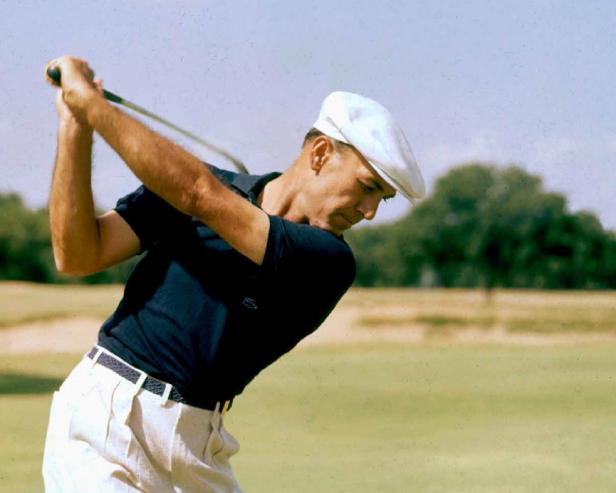Golf Digest published its first article on how to play this magnificent and infuriating game in the spring of 1950. Fittingly, it was titled “How to putt.” Can’t get that right, the editors must have figured, and there’s no sense in learning the rest.
But since that time, the rest has been covered in this magazine by a Hall of Fame list of regular contributors including Byron Nelson, Paul Runyan, Harvey Penick, Sam Snead, Bob Toski, Davis Love Jr., Jack Nicklaus, John Jacobs, Jim Flick, Butch Harmon, David Leadbetter, Tom Watson, Jim McLean, Michael Breed and Tiger Woods.
As part of our 70th anniversary celebration, we’re republishing one insightful instruction article from each decade of Golf Digest’s existence. These articles come from the player who was the most dominant during that respective time. We hope you enjoy (and learn from) this step back in time. Below you’ll find timeless fundamentals from Ben Hogan. Click here to read the entire article. –Ron Kaspriske
Developing a good golf swing is a helluva tough chore—at least it was for me. First, you must gather all the material, sift through it, and throw away what’s not good for you. It’s something like making a mulligan stew. However, there are several fundamentals that are applicable to everyone. These fundamentals are particularly important in developing a swing that repeats. And after all, that is what every golfer should strive for—a swing that will work the same all the time. I think anyone who does not have a physical disability can be a 70s-shooter. But he or she has to want to do it—and must work at it. Here are the fundamentals:
GRIP
The union of the two hands must be right and constant—or all else is lost.
POSTURE
This is how you stand: right foot straight, left toe pointing out, knees slightly flexed, back straight.
ARMS
The position of the arms is very important. From the clubhead to the left shoulder, there should be but one hinge—at the hands. With the left arm firm and the right arm loose, you can be assured of always coming back to the ball in the same place. The right elbow points to the body.
BACKSWING
The left arm continues to be straight all through the backswing. This permits the clubhead to travel the greatest distance. The right elbow points to the ground at the top of the backswing.
THROUGH-SWING
As you swing through the ball the right arm straightens and—most important—the body follows the swing. I’ve noticed one thing that all good golfers do and all bad golfers do not do: The good ones have their left wrist leading at impact. It seems a small thing, but I’ve found it to be true. At impact, the left wrist of a good golfer is slightly [bowed], while that of a poor golfer is generally concave.
